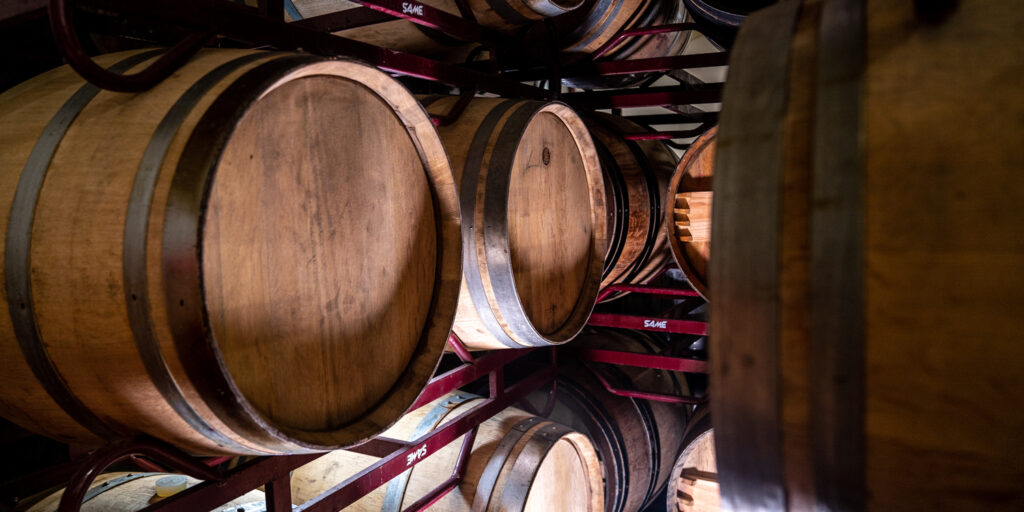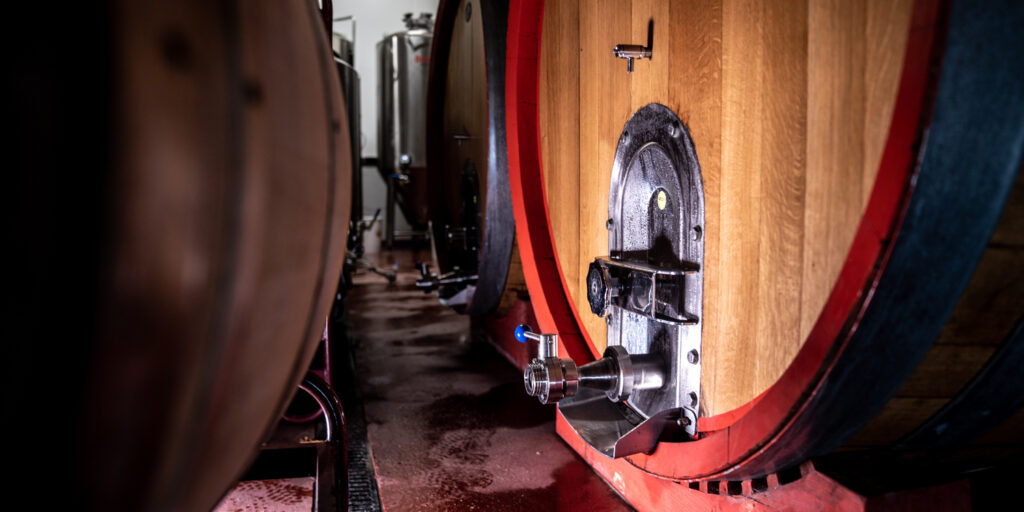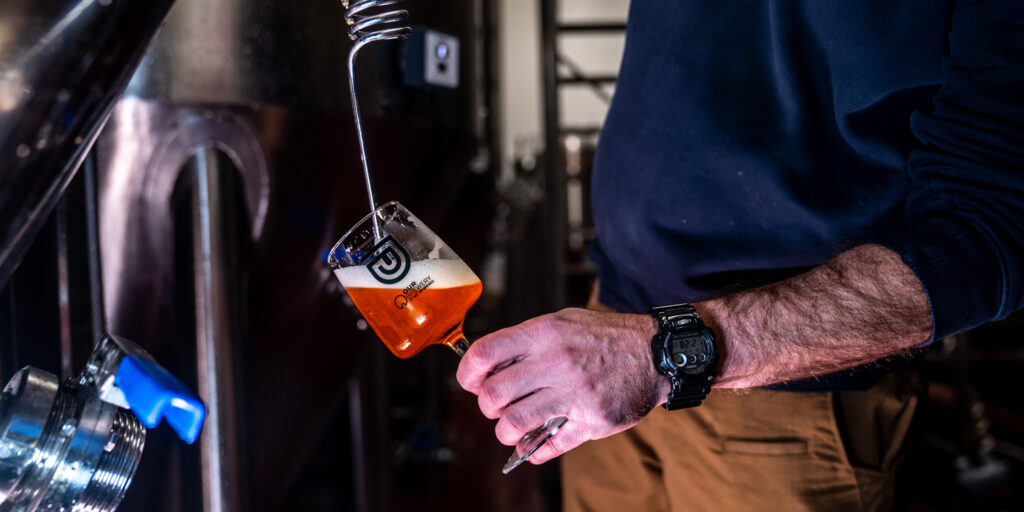Needs Must — Bridging the Gap between Beer and Wine
On a surface level, it feels relatively simple to compare beer with wine and, in turn, state that beer is clearly the most interesting and diverse of the two beverages. This is because beer typically uses four times as many ingredients compared to its grape-based sibling, surely meaning there is more scope for flavours, textures and different styles than there is with wine.

It wasn’t until I visited a winery, however, that I properly understood how nuanced and, often, complex the processes and techniques behind winemaking are, and how incorrect the above statement is.
Situated a few miles north of the Washington/Oregon border, near the town of Walla Walla and sat in the shadow of the Blue Mountains, Spring Valley Vineyard is where I learned that wine is often greater than merely the sum of its parts. I’d visited vineyards and wineries before, but at Spring Valley I noticed a distinct enthusiasm to educate a die-hard beer lover on how the processes and techniques employed by winemakers give them a massive array of flavours to play around with.
The most immediately obvious of these is that winemakers, typically, have a much deeper connection to the provenance of their ingredients than brewers. While not all wineries are vineyard-based—meaning they grow their own grapes rather than buy them in—most are. This means that the majority of winemakers are also farmers; workers that carefully cultivate their produce through the seasons, before harvesting, and beginning the process where this crop eventually becomes wine.
Most brewers will buy in their ingredients, and while there is absolutely nothing wrong with this, this extra level of connectivity gives winemakers a special relationship with their ingredient that brewers don’t really get to experience in the same way. For example: a good winemaker will know exactly when to harvest a certain grape variety to get specific sugar content, to get a specifically desired result once the juice has been fermented. They will also know how the weather, climate, and even type of soil the grapes have been cultivated in will affect the finished flavour of the wine.
It’s also true that winemaking isn’t merely as simple as pressing grapes, and fermenting the juice into something that is eventually sold as wine. On my visit to Spring Valley I learned this after a hands-on experience with some Pinot Noir grapes that had been harvested just three days before my arrival. These grapes were undergoing a particular type of fermentation known as ‘carbonic maceration’.
During a typical fermentation, grapes are picked, destemmed and pressed before the juice is allowed to ferment, either with the naturally occurring yeast present on the grape skins, or through a pitched yeast strain (much like with most brewing.) During carbonic maceration, however, grapes are left as whole bunches and then placed in a steel vessel that has been flushed with carbon dioxide. With no oxygen present, the grapes will begin to ferment intracellularly (from the inside out), breaking down sugars and malic acid in the process. The result of which typically yields a wine that’s lighter in body, with less tannins.
After having a go at ‘punching down’ the vessel where these grapes had been undergoing carbonic maceration, I got to taste the juice. It would have been less than 2% alcohol, and I remember it being intensely sweet, but vibrantly flavourful. An early indicator of what the eventual wine might taste like after further fermentation, and ageing in oak. A few hours spent strolling around the winery, through its vineyards and into its vast barrel store, I learned about many more techniques that can subtly shift a finished wines flavour profile: the type of oak used; the size of a barrel; the amount of time the juice is allowed to ferment on its skins.

These are just a handful examples of the nuances and techniques available to winemakers – just as there are to brewers. But, if both of these categories have so many wonderful tools at their disposal, how many of these can then be adapted when the two are used together? What potential could working with the grape and the grain simultaneously unlock?
Just like natural winemakers ferment using only the yeast that resides on the grape skins themselves, many breweries utilise ‘wild’ yeast and bacteria that occurs naturally in the air around us to spontaneously ferment beer. With a combination of this style of fermentation, plus maturation in oak (sometimes for up to three years) these beers will develop a complex, acidic flavour profile, akin to cider, or wine. Some of the best examples of this are perhaps the Lambics and Geuze produced by a handful of Belgian producers, including Cantillon in Brussels, and Boon, in the village of Lembeek (from where the style takes its moniker.)
Spontaneously fermented beers, while niche, have grown in popularity over the past few years, as curious beer drinkers, inspired by the different styles being brewed all over the world, seek new frontiers of flavour with which to test their palates. There’s also a romance to these beers—perhaps inherent because they take up to three years to make. In the UK these styles have been popularised by breweries including Burning Sky in Sussex, and Fyne Ales in Scotland, through its Origins series of beers. In Northern Ireland, Our Brewery has also been squirrelling away spontaneously fermented beers in former wine barrels, as well as some larger oak vessels called foeders—but you’ll have to wait a wee while longer for these beers to be ready. Good spontaneous beer takes time.
Some breweries are choosing to take the inspirations from the wine world even further. Hybrid, or co-fermentation (not to be confused with mixed fermentation, which is the use of more than one yeast strain) has been steadily gaining popularity among breweries over the past couple of decades. By co-fermenting with either must (essentially the pressed grape juice before fermentation, the winemakers equivalent to wort), spent grape skins that still have some residual sugars and tannins, or wine lees (the yeasty slurry left over in a barrel after it has finished fermentation) brewers have the capacity to imbue their beers with the same characteristics as wine.
Some breweries, such as Jester King in Austin, Texas, have even started cultivating their own grapes, giving them the same connection to the land and the produce as winemakers. In the UK, Burning Sky and neighbouring Sussex brewery Beak are among a handful of breweries to have collaborated on a hybrid ferment, in their case with Westwell Wines in the neighbouring county of Kent. Beer Piquette saw a clean saison from Burning Sky blended with a mixed fermentation beer from Beak, and juice from pressed Pinot Meunier, Pinot Noir and Chardonnay grapes grown on Westwell’s estate.
If you’ve heard of those grape varieties before, then it might be because you’re a Champagne drinker. Remarkably, the chalk seam that runs beneath Westwell’s vineyard is the same one that travels all the way to the Champagne region of France, this terroir giving the grapes a similar – if not identical – quality to those cultivated in the storied wine region. This imbued the beer with the rich, spritzy and dry quality of the famous sparkling wine that, when buoyed with the acidic tang of the Beak saison, and the crunchy, bone dry character of the beer from Burning Sky, created a beverage that was somehow even more delicious than the sum of it parts.
What a collaboration like this demonstrates is there really is no limit to what we can experiment with in terms of fermented beverages. If you consider that categorisations were designed to commodify these drinks, then just imagine what could happen if you threw these categories out of the window, and focused solely on deliciousness… While I admit it’s important for wine and beer to stand apart, I also relish the possibilities of what will happen as these worlds are brought closer together.
—Matthew Curtis
